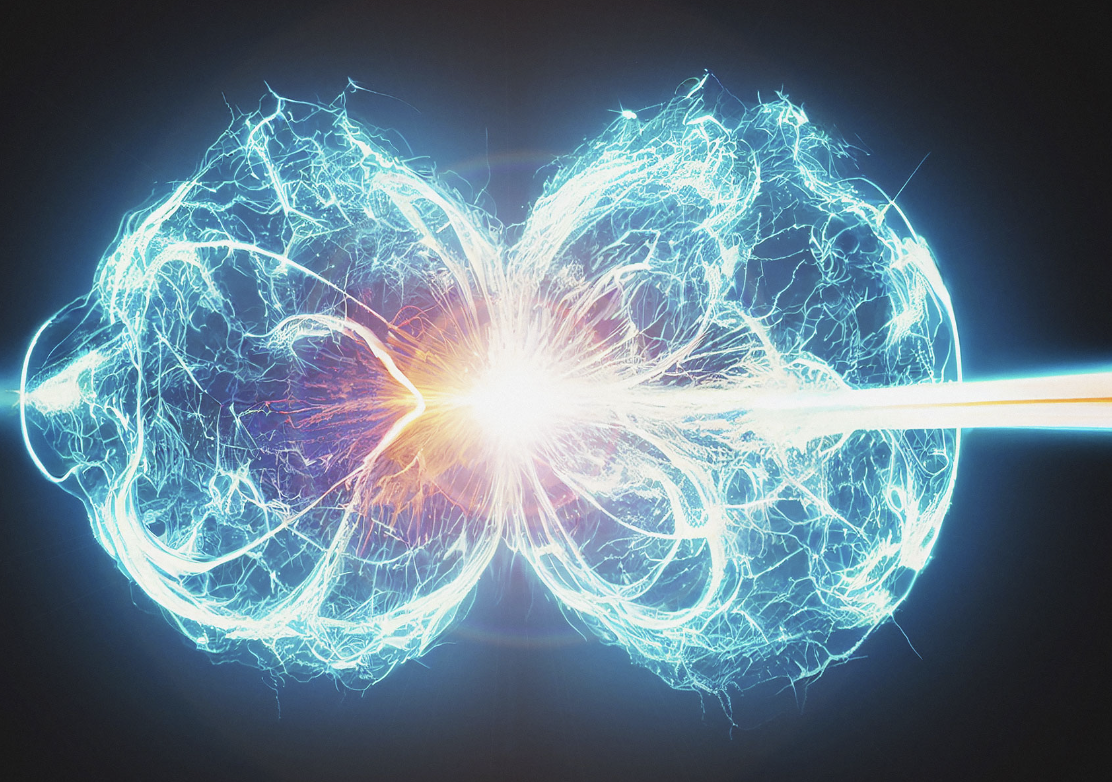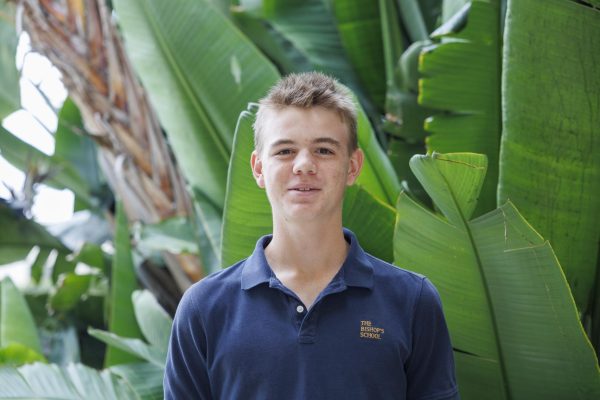Every day, scientists at General Atomics’ DIII-D National Fusion Facility in San Diego fire millions of isotopes (atoms with extra neutrons) of hydrogen into their tokamak — an advanced thermodynamic machine. Then, for a fraction of a second, the temperature of the hydrogen — whose heat is confined in the machine through the use of high-powered magnets — exceeds the core of our sun, forcing the nuclei of the hydrogen atoms to fuse together. As the nuclei fuse to create helium, a massive sum of energy is released. Then, as quickly as the reaction occurred, it suddenly ends.
Fusion, a natural reaction that powers all the stars in the universe, is a form of nuclear energy. The other form, fission, breaks apart the nuclei of heavy isotopes such as uranium. Fusion, however, merges the nuclei of two hydrogen isotopes together into a heavier and more stable nucleus. Physics Teacher Mr. Marcus Milling explained that in this process “a huge amount of energy is released” because of a physics phenomenon first discovered by Albert Einstein in 1905. Mr. Milling elaborated on Einstein’s finding, which become an integral part of his Special Theory of Relativity, explaining that Einstein “learned that when two things are bound more tightly together, they have less mass. However, energy is also released, so [he realized that] in some way, mass and energy are related.” As for the two hydrogen nuclei in the fusion reaction, because the total mass of the two single nuclei is more than the mass of the single fused nucleus, the lost mass becomes energy, as described by one of Einstein’s most celebrated equations: E = mc2.
Put more simply, fusion is a risk-reward scenario. General Atomics DIII-D Physicist Dr. Colin Chrystal, who The Tower had the chance to talk to, explained, “To achieve practical fusion, we first need to understand it better. We need to do experiments to see if it is possible to solve its current challenges…overcoming many of these challenges requires government funded research.” And so, the United States government spending money to see if fusion is even possible — not even to put it on the grid — is an enormous risk.
But if successful, fusion has tremendous reward.
“Fusion energy avoids many of the pitfalls of energy from fossil fuels, renewables, and nuclear fission energy,” explained Chemistry and Earth Science Teacher Ms. Katlin Douglass. It is a clean source of energy that will not harm Earth. It is efficient and abundant, two key components to winning the renewability race. It is incredibly space efficient: with just a few grams of hydrogen isotopes, and it is possible to produce a terajoule of energy, which is enough to supply energy to 13 people for an entire year, according to a Stanford study. “It doesn’t have the intermittency & energy storage issues that renewables have,” Ms. Douglass said. Lastly, unlike fission, fusion is a safe nuclear power. Mr. Milling expanded that, “fusion has close to zero radioactive waste materials, making it much safer than fission.” Dr. Chrystal added that, “One of the key advantages is that it is not a chain reaction, so it does not have the same potential for nuclear accidents present in fission reactors.”
Also, fusion’s market has a huge upside. Bloomberg gave the nuclear fusion market a $40 trillion valuation. In comparison, the entire renewable market currently is valued at less than $1 trillion. This illustrates how lucrative the fusion market is in comparison to every renewable alternative. So in a political world where the main argument against moving away from fossil fuels and towards renewables is economic fallout, establishing a fusion market would fix this.
At DIII-D National Fusion Facility — operated by General Atomics on behalf of and funded by the U.S. Department of Energy — scientists are trying to replicate this process of the stars using their tokamak. On a basic level, a tokamak injects deuterium and tritium (isotopes of hydrogen) in a torus (donut) shaped interior that is then heated to millions of degrees. At these thermonuclear temperatures, bonds break down and electrons are stiped from atoms. These occurrences, along with the overall temperature of the matter, force the state of matter to transform from gas to plasma, which is the hottest form of matter. This resulting plasma has all the properties of a fluid, most notably taking the form of its container, and responding strongly to electromagnetic forces.
The atoms that make up the plasma must be heated to a high temperature. Due to laws of thermodynamics, this high temperature makes the atoms move extremely fast. “The nuclei of atoms are interesting because they are extremely repellent to one another at first. However, if they move quickly enough at each other, they can fuse together, and once that occurs, it is extremely difficult to break them apart,” Mr. Milling explained.
To prevent the extremely hot matter from melting the tokamak and facility, powerful magnets contain the matter and heat. This process, called magnetic confinement, is also important because it forces the plasma to become more dense. And so, creating movement amongst the particles in a small area raises the probability for collisions and fusion.
Because that plasma is moving incredibly fast, if the machine was not torus shaped, there would be an end side, and the plasma would quickly blast through it. The torus shape allows the plasma to keep spinning around, and never have an end.
Despite DIII-D’s (and other fusion labs’) promising technology that could lead to fusion energy and ensure an abundant, safe, and clean energy source that would wipe all other sources of the grid, it is still unclear if humans are capable of replicating fusion.
The largest challenge with practical fusion is its juxtaposition with fission. Fission plants are sustaining because, at the quantum level, a chain reaction occurs, elongating the fission process. However, fusion is completely different. Dr. Chrystal explained that, “The chief challenge for fusion is insulating the plasma well enough that it heats itself and creates a self-sustaining fusion reaction.” Because fusion is a thermonuclear reaction, not a chain reaction, elongating this process relies on the tokamak’s ability to keep the plasma hot enough — called ‘confinement’ in nuclear physics.
Confinement is crucial if fusion is to become a practical energy source because it takes time to collect the energy from the exothermic reaction. “The problem is not just creating the conditions necessary for fusion to occur, it is holding onto the energy generated by fusion reactions long enough that the externally applied input power can be made much smaller than the output fusion power,” Dr. Chrystal added.
Even if a self-sustaining reaction could be achieved, there is also the obstacle of harvesting the energy of fusion into actual energy for the grid. “If our tokamak was to collect the energy from the fusion reactions, the technology that will need to be developed is a huge engineering challenge,” Dr. Chrystal pointed out. “Creating what we call ‘a blanket’ around the machine that can absorb the energy of the fusion generated neutrons while also generating tritium to feed the reaction is extremely difficult.”
Beyond the quantum complications and nuclear engineering obstacles, the greatest challenge for fusion’s future is funding. Dr. Chrystal explained that, “at DIII-D we really do not have sufficient funding to test all the experiments we want to test…this proves to be a barrier towards progressing our fusion research and understanding.”
According to the Government Accountability Office, in 2022, the Department of Energy (DOE) — an official government bureaucracy in charge of funding U.S. energy projects — gave a total $713 million for fusion programs and research. In comparison, in 2022, the total government funding to renewable energies was $15.6 billion, according to the Energy Information Administration’s Federal Financial Interventions and Subsidies in Energy report. This means that fusion research — the objectively best energy source if accomplished — received a mere 4.57% of total renewable funding.
But that is just the beginning.
Dr. Chrystal pointed out that, “The main way renewables have benefited from government intervention is through subsidies for the generation of wind and solar power. To date, the amount of money given to renewables this way is on the order of trillions of dollars and dwarfs total fusion funding.” So in reality, the total government funding — both directly and through subsidies — is far less than 4.57%.
Ms. Douglass pointed out that “though it’s not guaranteed that we will figure out how to replicate what our universe does — that has ultimately led to us all existing here in the first place — I think it’s worth it to invest in our understanding of these processes.” Dr. Chrystal noted that he, “understands that it is difficult to lobby for large spending on research for something that we are not sure will even work…but, because of the tremendous upside if fusion is to be accomplished, it is worth spending money to see if it works.”
“I see fusion research as humans really pushing the limits of our ability to harness the wonders of nature towards making the world a better place…the reactions that are being studied here have the potential to revolutionize our future as a species,” Ms. Douglass concluded.
Yes, fusion is a risk. It has its challenges. And the U.S. government putting billions of dollars into fusion research, to see if these challenges can be solved, is a risk. But fusion has tremendous reward. It is a clean source of energy that will not harm Earth. It is an efficient, abundant, and lucrative energy. And it is a safe nuclear power, unlike fission.
So, in a time when the clock for effective action on climate change is ticking down, the risk of funding a possible species-altering discovery seems minor in comparison to the reward.









